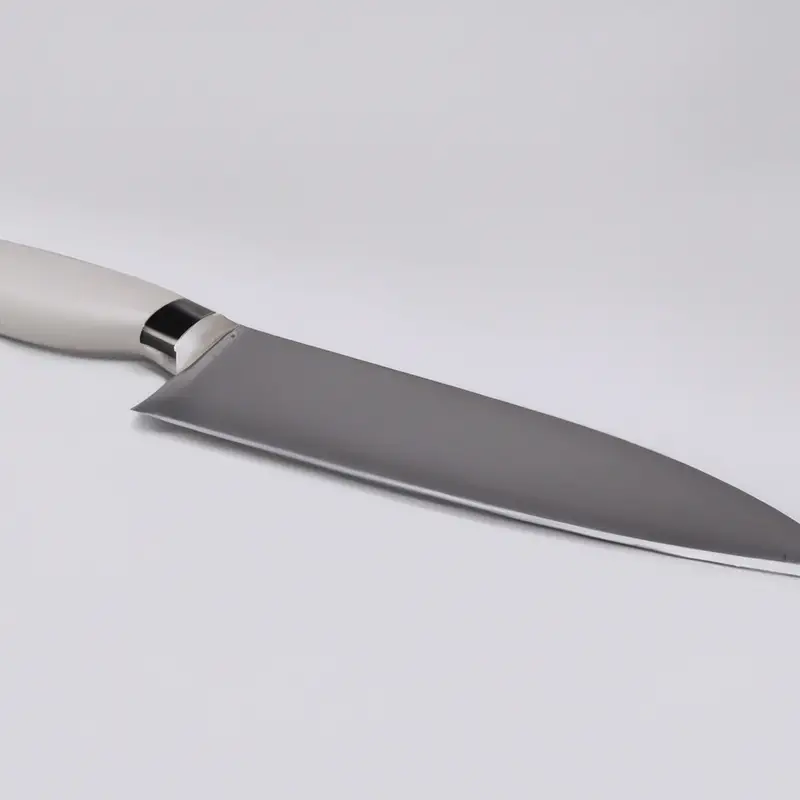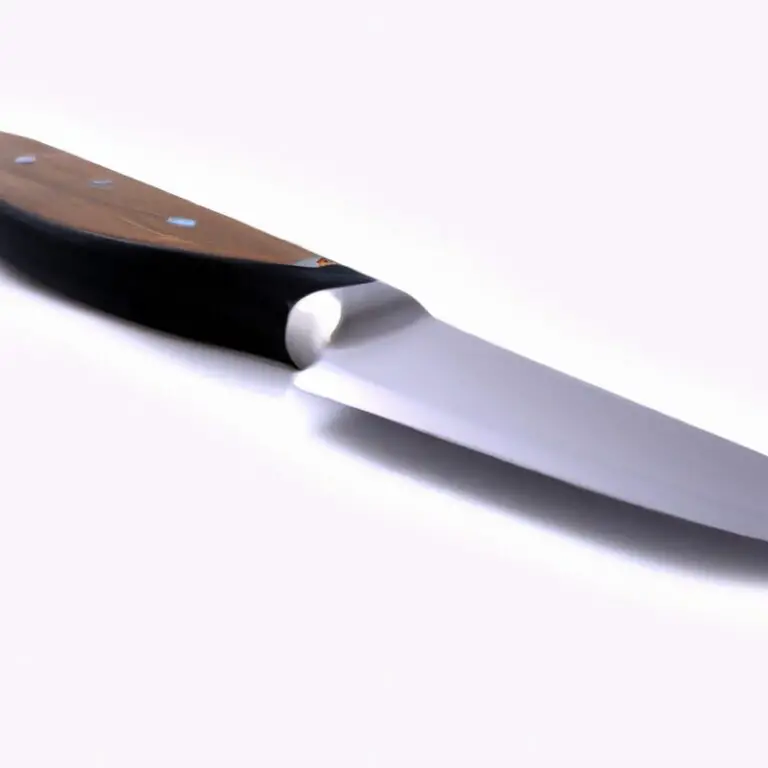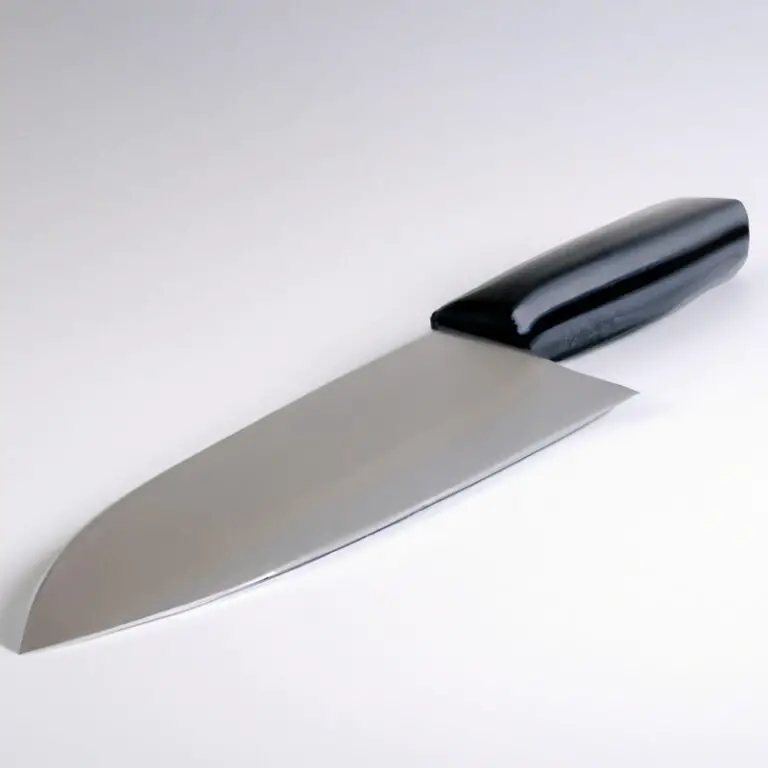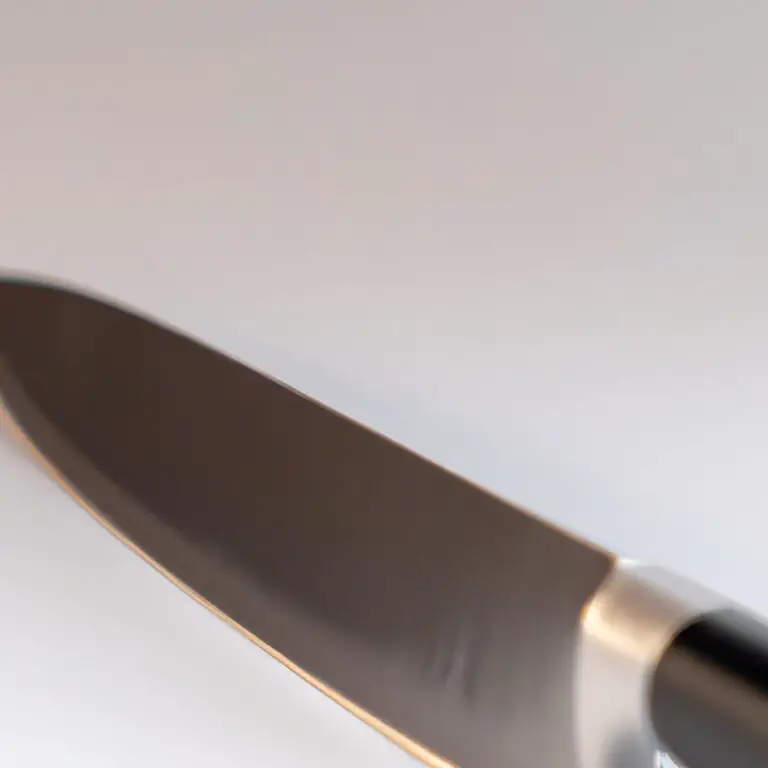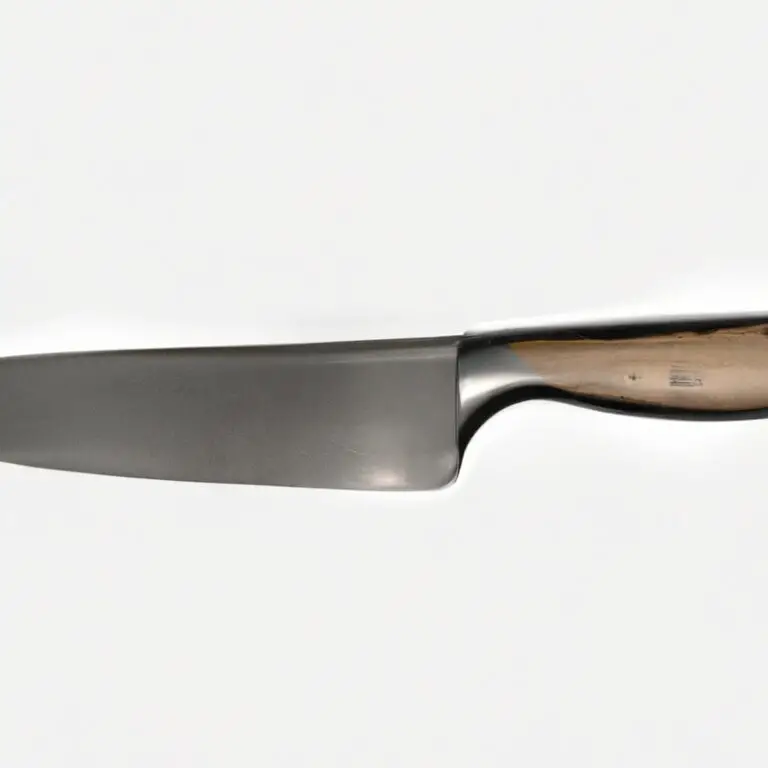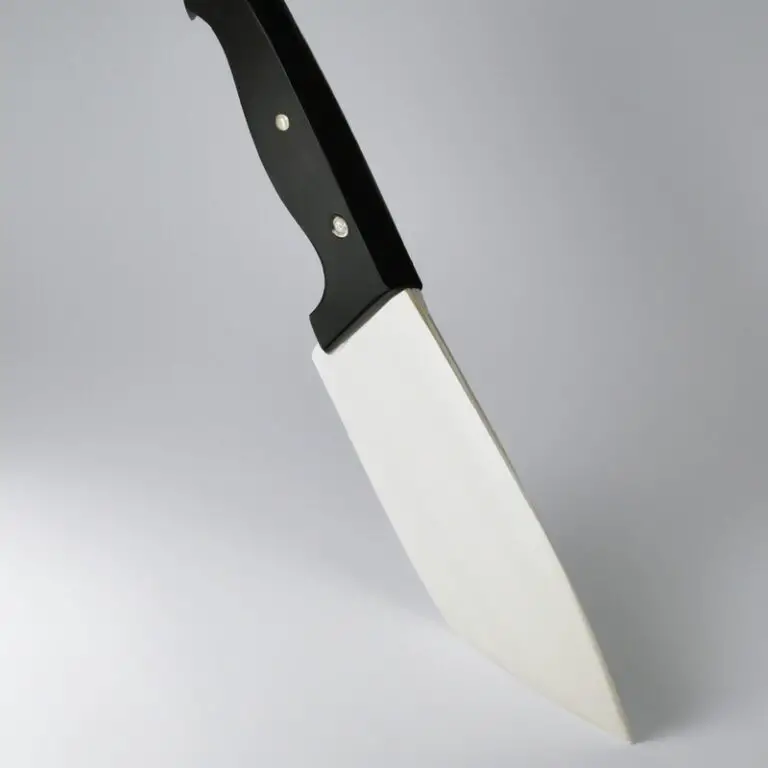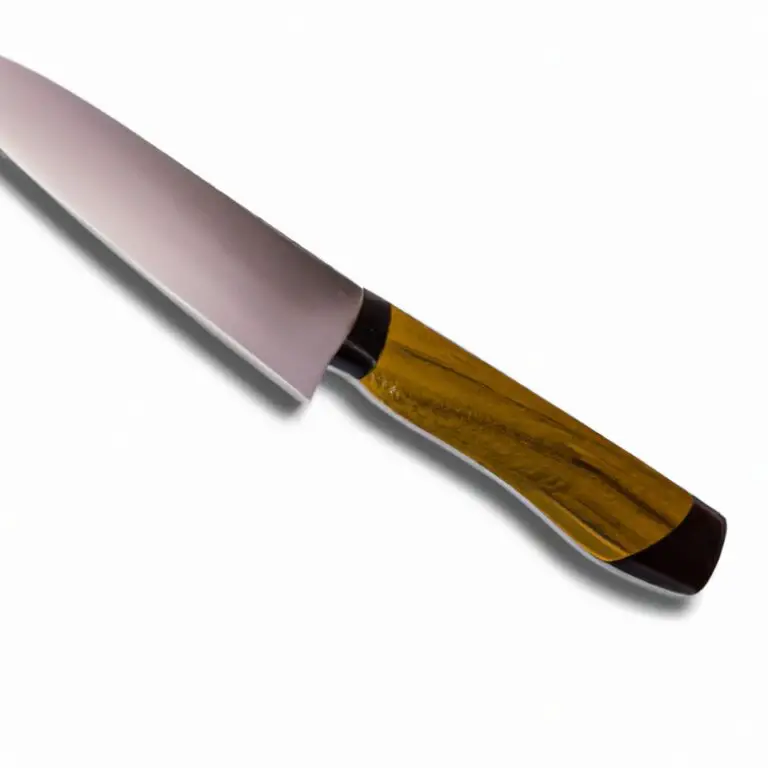How To Remove Rust From a Chef Knife?
Key Takeaways:
- Soak the chef knife in white vinegar or lemon juice for a few hours to dissolve rust.
- Use a baking soda paste and a soft-bristled brush to gently scrub the rust off of the knife.
- Dry the knife thoroughly after removing rust to prevent further corrosion.
- Regularly clean and dry chef knives after each use to prevent rust buildup.
As a culinary enthusiast, there’s nothing more frustrating than discovering rust on your prized chef knife. But fear not, removing rust from your knife is an easy process that requires a few basic materials and techniques.
In this article, we’ll dive into the causes and severity of rust on a knife, gather the necessary materials, and explore safe and effective techniques to rid your blade of rust.
Whether you’re a professional chef or a home cook, these tips will help you restore your knife’s sharpness and prevent future rust formation.
| Methods | Materials Required | Effectiveness |
|---|---|---|
| Citric Acid | Citric acid powder and water | Effective for light rust |
| Vinegar | Vinegar and water | Effective for light rust |
| Baking Soda | Baking soda and water | Effective for light rust |
| Potato | A potato and dish soap | Effective for light rust |
| Steel Wool | Steel wool and lubricant oil | Effective for heavy rust |
Understanding the causes of rust on your chef knife
Rust forms on chef knives when moisture and acidic substances combine with the iron in the blade. Exposure to water and high humidity levels accelerate the rusting process.
Other common causes of rust include neglecting to clean and dry the knife after use and storing it in a damp place.
Poor quality steel, high carbon content, and lack of proper maintenance can also lead to rust formation. Understanding the causes of rust on your chef knife is essential to prevent its occurrence and keep your knife in good condition.
Evaluating the severity of rust on your knife
Before attempting to remove rust from your knife, it is important to evaluate the severity of the rust. Light rust can be easily removed with DIY methods, while heavy rust may require professional help.
To evaluate the severity of rust on your knife, inspect the blade and look for areas where the rust has eaten deep into the metal or pitting has occurred.
If there is only surface rust, it can be removed with simple DIY tools like baking soda, vinegar, and abrasive pads. However, if the rust has caused structural damage to the blade, professional help might be required as you might damage the blade or injure yourself while attempting to remove the rust.
It is important to remember that removing rust from your knife is not a one size fits all approach.
The severity of the rust, as well as the type of knife, will determine the method to be used. Therefore, it is recommended to seek professional help if you are unsure about the severity of the rust or the method that should be used to remove the rust.
Gathering the necessary materials for removing rust
To remove rust from your chef knife, you will need to gather a few materials:
- A scrubber or abrasive pad
- Vinegar or lemon juice
- Baking soda
- A bowl or container to hold the solution
- A clean towel or cloth
- Steel wool or sandpaper (optional
- Protective gloves (optional
These materials are readily available at home, making rust removal from your chef knife an easy DIY process. Make sure to have all these materials ready before proceeding to the next steps.
Preparing your workspace for rust removal
Before beginning the rust removal process, it’s important to prepare your workspace properly. This will help ensure your safety and the effectiveness of the rust removal.
First, choose a well-ventilated area with plenty of space to work.
Cover your work surface with a plastic drop cloth or newspaper to prevent any damage or staining. It’s also important to wear protective gloves, safety glasses, and a mask to avoid inhaling any harmful particles.
Next, gather all the necessary materials and tools that you will need for the rust removal process, including abrasive materials, a bowl of warm water, and a sponge or cloth for cleaning.
Keep these items organized and within reach on your work surface. Lastly, be sure to keep children and pets away from your workspace during the rust removal process.
By following these steps, you can ensure a safe and efficient workspace for removing rust from your chef knife.
Choosing the right type of abrasive for rust removal
Choosing the right type of abrasive is crucial for rust removal from a chef knife. Here are some common types of abrasives and their uses:
- Steel wool – steel wool comes in different grades ranging from 0000 to 4, where 0000 is the finest and 4 is the coarsest. Use fine-grade steel wool for light rust removal and coarser grades for heavier rust.
- Sandpaper – sandpaper comes in different grits, starting from 60 grit (coarsest to 2000 grit (finest). Coarse grits are suitable for heavy rust removal, while finer grits are effective for polishing the knife.
- Abrasive pastes – these are made by mixing abrasive powder with a bonding agent. They come in different formulations and are suitable for light to moderate rust removal.
Choose an abrasive that matches the severity of rust on your knife. Start with a less abrasive option and gradually move to more abrasive options if necessary.
Always wear gloves and eye protection when using abrasives, and work in a well-ventilated area.
Avoid dipping the knife in water while using abrasives as it can cause more rust formation.
Using safe and effective techniques to remove rust from your knife
To effectively remove rust from your chef knife, it’s vital to opt for safe and efficient techniques. Some of the recommended methods include using rust erasers, sandpapers, or abrasive pads to eliminate rust particles.
While using these abrasives, ensure to maintain proper pressure and motion to avoid damaging the knife’s blade.
You can also use vinegar or baking soda to soak the affected portions of the blade for about 30 minutes before scrubbing the rust off with a soft-bristle brush or nylon scrub pad. Avoid using harsh chemicals or abrasive cleaners such as steel wool, bleach, or hydrogen peroxide as they can damage the knife and cause corrosion.
Once the rust particles are removed, use clean water to rinse off any residue and dry the knife with a soft cloth.
Apply a coat of oil or wax to prevent future oxidation. Proper knife maintenance, including regular cleaning, drying, and storage in dry conditions, can significantly reduce the chances of rust formation.
If the rust damage is severe, it’s wise to seek professional sharpening services to prolong your knife’s lifespan.
Cleaning your knife after rust removal to prevent future rust formation
Once you have successfully removed rust from your chef knife, it is important to thoroughly clean it to prevent future rust formation. After wiping off any debris remaining from the rust removal process, wash the knife with warm, soapy water and dry it completely.
Make sure to remove any moisture from the blade and handle, paying special attention to areas where water can pool and cause corrosion.
To further protect your knife, consider applying a thin layer of food-grade mineral oil or wax to the blade and handle. This will provide a barrier against moisture and prevent rust from forming in the future.
Remember to clean and oil your knife regularly, as part of its regular maintenance routine.
Avoid exposing it to moisture and harsh chemicals, and store it in a dry environment to prolong its lifespan. By taking these steps, you can ensure that your chef knife remains in top condition and ready for all your culinary needs.
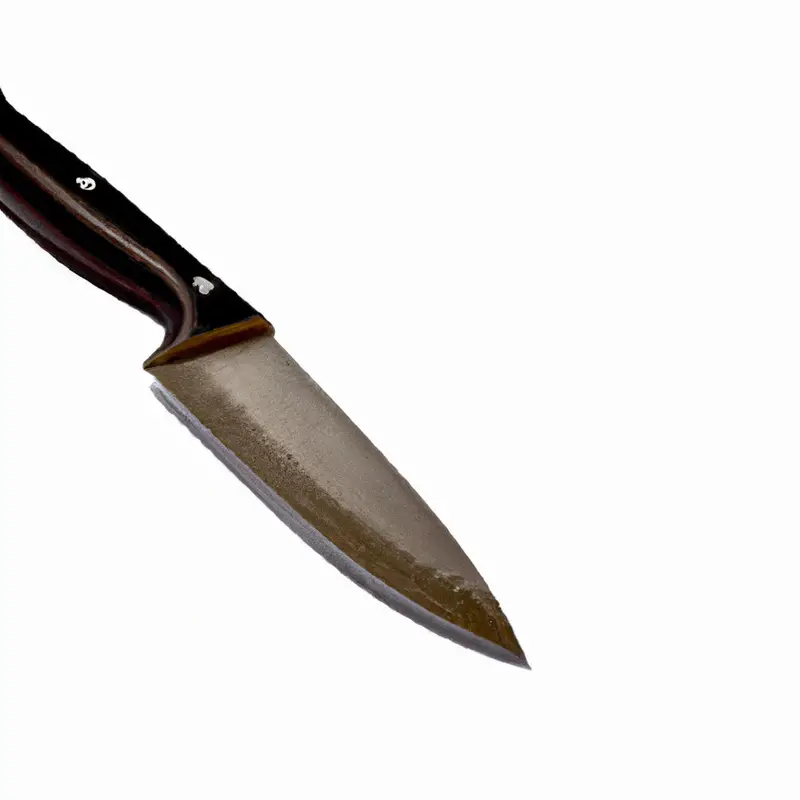
Applying oil or wax to prevent future rust formation
After removing rust from your chef knife, it is crucial to apply oil or wax to prevent future rust formation. Both oil and wax act as a barrier against moisture, preventing it from reaching the metal and causing rust.
Mineral oil or food-grade mineral oil is commonly used to prevent rust because it is odorless, flavorless, and safe for use with food.
To apply, simply wipe a few drops onto the blade with a cloth, spreading it evenly along the metal’s surface. Another option is using a microcrystalline wax, which offers a more durable protection layer against moisture.
Here, a small amount should be thinly applied over the blade, using a cloth to buff it until the metal appears shiny.
It is essential to note that applying too much oil or wax can attract dust, dirt, and other contaminants. Similarly, it is necessary to keep your knife clean to ensure that the protective layer remains effective.
Tips for proper maintenance of your chef knife to prevent rust formation
Proper maintenance of your chef knife is crucial to prevent rust formation. Here are a few tips to keep your knife in good condition:
- Clean and dry your knife after each use.
- Store your knife in a dry and safe place.
- Use a honing rod regularly to maintain the edge of your knife.
- Sharpen your knife when necessary using a sharpening stone or sending it to a professional.
- Avoid using harsh detergents or abrasive materials on your knife.
- Apply a thin coat of oil or wax to the blade to protect it from moisture.
- Use a rust eraser to remove any minor signs of rust formation before it becomes severe.
Re-evaluating your knife after rust removal to determine if professional sharpening is necessary
After successfully removing rust from your chef knife, it is important to re-evaluate its sharpness to determine if it needs professional sharpening. Rust can dull the blade and compromise its edge retention, making it difficult to cut through food with precision and speed.
To determine if your knife needs professional sharpening, use a piece of paper to check its sharpness.
If the knife glides smoothly and effortlessly through the paper, it is sharp enough for use. However, if it tears or rips the paper, then the blade needs sharpening.
Professional sharpening can restore the blade’s sharpness and edge retention, ensuring that your knife is safe and effective for use in a kitchen setting.
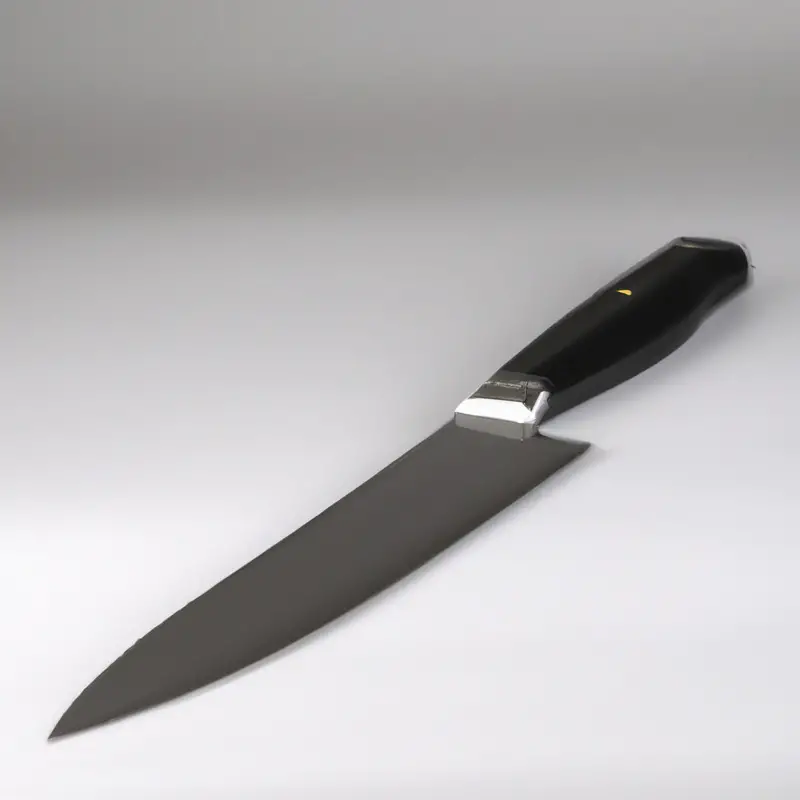
Ensuring the safety of your chef knife during and after rust removal
Ensuring the safety of your chef knife during and after rust removal is crucial to prevent injuries and maintain the knife’s quality. When removing rust, always wear protective gloves and goggles to avoid getting cut by the knife or getting chemicals in your eyes.
Make sure the knife is stable and secured during the rust removal process to prevent slipping or falling.
After rust removal, thoroughly clean your knife with soap and water, then dry it completely to prevent splotches from forming. Applying oil or wax can help protect the knife from rust formation in the future.
Ensure to store your knife in a dry and cool place to prevent rust formation.
Final Verdict
Rust on your chef knife can be a frustrating problem, but it is not irreparable. By understanding the causes and evaluating the severity of rust, gathering the necessary materials, and using safe and effective techniques, you can restore your knife to its former glory.
Remember to clean your knife after rust removal, apply a protective coating, and practice proper maintenance to prevent future rust formation.
By following these steps, you can ensure the longevity and safety of your beloved chef knife. Trust the expertise presented in this article and take action to remove rust from your knife today.

